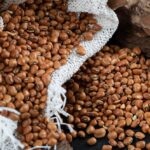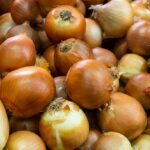Harvesting machines are essential tools for modern agriculture, helping farmers increase efficiency, save time, and reduce labor costs. These machines are designed to cut, gather, and sometimes process crops directly from the fields. Understanding the basics of using a harvesting machine is critical to ensuring optimal performance and maintaining the health of your crops.
Selecting the Right Harvesting Machine
Before you start, it is essential to choose the right harvesting machine for your crops. Common types of harvesting machines include combine harvesters, forage harvesters, and potato harvesters. The selection depends on the type of crop you are harvesting, such as grains, vegetables, or fruits. Consider factors such as the size of your field, your budget, and the specific features of the machine.
Preparing the Field and Machine
Proper preparation is key to a successful harvest. Ensure that your crops are mature and ready for harvesting. Conduct a thorough inspection of the machine, checking for wear and tear, sharpness of blades, and proper lubrication of moving parts. Adjust the settings of the harvester according to the crop type and field conditions.
Operating the Machine
Start the machine on level ground and make sure it is stable before use. Drive at an appropriate speed to avoid damaging the crops. Monitor the machine’s performance closely during the process, ensuring that it collects the crops efficiently and leaves minimal waste. Avoid overloading the machine, as this can lead to blockages and mechanical issues.
Safety Precautions
Safety should always be a priority. Keep a safe distance from moving parts and ensure that all operators are trained to use the machine. Wear appropriate protective gear and ensure that no one stands in the machine’s path during operation. Turn off the machine before conducting any maintenance or clearing blockages.
Maintenance and Storage
After harvesting, clean the machine thoroughly to remove dirt, debris, and crop residues. Inspect the components for damage and perform any necessary repairs. Store the machine in a dry, covered area to protect it from the elements and extend its lifespan. Regular maintenance checks are crucial for ensuring that the machine remains in optimal condition for future use.
Maximizing Efficiency with Technology
Many modern harvesting machines come equipped with advanced features such as GPS tracking, yield monitoring, and automated controls. Familiarize yourself with these features to optimize your harvesting process. These technologies can help improve accuracy, reduce waste, and increase overall productivity.
Using a harvesting machine effectively requires proper planning, operation, and maintenance. By following these basics, farmers can ensure a smooth and efficient harvesting process, resulting in healthier crops and improved yields.







